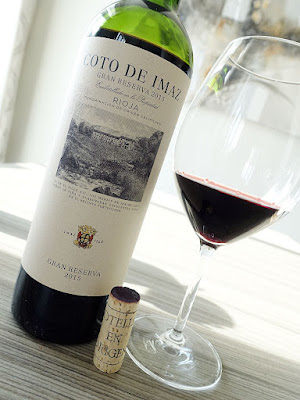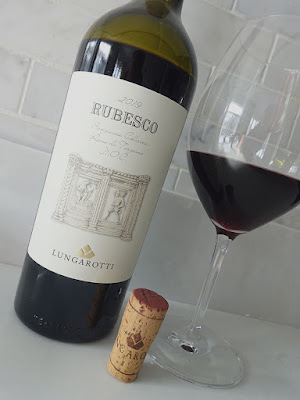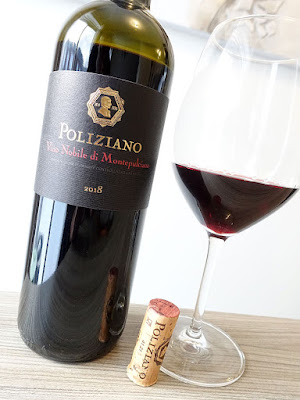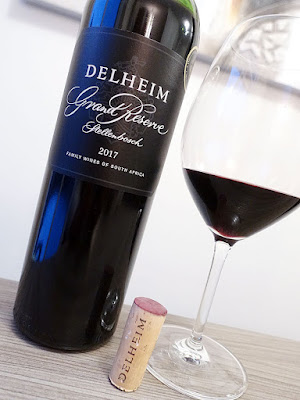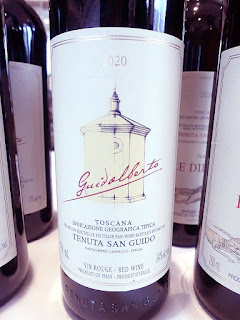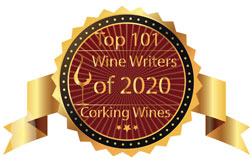red wine review is a sneak preview of a lovely red wine from B.C. that is expected to be released by the winery this Spring!
It is produced by French Door Estate Winery, a small, boutique, family-owned and -operated winery and vineyard that was founded in 2019 by Audra and Jason Shull. They are located on the beautiful Black Sage Bench at 365 metres above sea level on a plateau edge overlooking the valley, south of the town of Oliver, in the southern Okanagan Valley.
With a passion for quality wine, the 10-acre property is planted with 100% vinifera vines, both red and white, on beautiful, expressive soils that have resulted in rich, lush, and character driven wines. The soils on the property are sandy and rocky, with a gravel and clay base that are very well drained, with a granitic sub-soil. Their goal is to produce honest, low-intervention wines, from sustainably grown grapes, in a classic old-world French style.
The name "French Door Estate Winery" came to mind because the family was inspired by the simplicity and quality of French architecture, cuisine, and wine during their travels to Provence. As they believe that the Okanagan valley has a similar uniqueness about it, the Shull family wanted to bring these parallels to life through the way their wine is made and discussed.
Their consultant winemaker is Pascal Madevon, a man who integrates his French heritage into all of his wine creations. All of the wines are produced in the Barrel Room where there are three Tonneau French oak vats and French oak barrels. The French theme continues with a white and bright with black accents colour scheme throughout the winery, resembling the look and feel of a French farmhouse. The symbol of the "French door" is representative of their aspiration to incorporate the traditional aesthetics and values of beautiful Provence into their own backyard, with a modern twist.
This red wine from the Okanagan Valley is a blend of 41% Merlot, 28% Cabernet Franc, 13% Cabernet Sauvignon, 7% Syrah, 6% Malbec, and 5% Petit Verdot. The grapes were grown at their estate vineyard which experiences long days of sunshine, while the Oliver wind in the afternoon cools the grapes until the sun goes behind Mount Kobau. Each vineyard block and variety is cultivated with precise care depending on the vines' needs. To vinify this wine, all of the grapes were hand-harvested and sorted before being de-stemmed and gently crushed into tanks. Each variety was fermented separately and was followed by an extended maceration to extract colour and tannins. Free run wine was drained directly into barrels, while the rest was pressed off the following day, and then aged for 14 months in 60% neutral and 40% new French oak barrels before being bottled.
The 2020 growing season in the Okanagan started wet and cool, which meant a smaller fruit set than usual. The result was a smaller grape harvest, which in turn meant less wine. However, the grape quality of what was picked was excellent due to perfect ripening conditions, and the quality of the wines will be among the best of the decade. According to French Door, their 2020 Héritage could be their most refined yet. Let's see how this 2020 Okanagan Valley red wine is tasting tonight...
Blend of 41% Merlot, 28% Cabernet Franc, 13% Cabernet Sauvignon, 7% Syrah, 6% Malbec, and 5% Petit Verdot. The medium+ intensity nose seems a bit shy, offering elegant dark fruited aromas of black currant, cassis, and blackberry nuanced with savoury freshly tilled earth, olive, dried herbs, and oak spice adding complexity. On the elegant, refined, medium-full bodied, and dry palate it has lovely dark currant, blackberry, black cherry, olive, and earthy flavours. It has fresh acidity and elegantly refined, well-structured tannins, with savoury cocoa and herbal notes lingering on the long, juicy finish. Really elegant and refined throughout. Once released, this is a highly recommended buy! Score: 92+ pts
While this 2020 vintage isn't available for purchase as of yet at the time of this post, the 2019 vintage of this terrific wine is available direct from the winery.
It is produced by French Door Estate Winery, a small, boutique, family-owned and -operated winery and vineyard that was founded in 2019 by Audra and Jason Shull. They are located on the beautiful Black Sage Bench at 365 metres above sea level on a plateau edge overlooking the valley, south of the town of Oliver, in the southern Okanagan Valley.
With a passion for quality wine, the 10-acre property is planted with 100% vinifera vines, both red and white, on beautiful, expressive soils that have resulted in rich, lush, and character driven wines. The soils on the property are sandy and rocky, with a gravel and clay base that are very well drained, with a granitic sub-soil. Their goal is to produce honest, low-intervention wines, from sustainably grown grapes, in a classic old-world French style.
The name "French Door Estate Winery" came to mind because the family was inspired by the simplicity and quality of French architecture, cuisine, and wine during their travels to Provence. As they believe that the Okanagan valley has a similar uniqueness about it, the Shull family wanted to bring these parallels to life through the way their wine is made and discussed.
Their consultant winemaker is Pascal Madevon, a man who integrates his French heritage into all of his wine creations. All of the wines are produced in the Barrel Room where there are three Tonneau French oak vats and French oak barrels. The French theme continues with a white and bright with black accents colour scheme throughout the winery, resembling the look and feel of a French farmhouse. The symbol of the "French door" is representative of their aspiration to incorporate the traditional aesthetics and values of beautiful Provence into their own backyard, with a modern twist.
This red wine from the Okanagan Valley is a blend of 41% Merlot, 28% Cabernet Franc, 13% Cabernet Sauvignon, 7% Syrah, 6% Malbec, and 5% Petit Verdot. The grapes were grown at their estate vineyard which experiences long days of sunshine, while the Oliver wind in the afternoon cools the grapes until the sun goes behind Mount Kobau. Each vineyard block and variety is cultivated with precise care depending on the vines' needs. To vinify this wine, all of the grapes were hand-harvested and sorted before being de-stemmed and gently crushed into tanks. Each variety was fermented separately and was followed by an extended maceration to extract colour and tannins. Free run wine was drained directly into barrels, while the rest was pressed off the following day, and then aged for 14 months in 60% neutral and 40% new French oak barrels before being bottled.
The 2020 growing season in the Okanagan started wet and cool, which meant a smaller fruit set than usual. The result was a smaller grape harvest, which in turn meant less wine. However, the grape quality of what was picked was excellent due to perfect ripening conditions, and the quality of the wines will be among the best of the decade. According to French Door, their 2020 Héritage could be their most refined yet. Let's see how this 2020 Okanagan Valley red wine is tasting tonight...
Tasting Note:
FRENCH DOOR ESTATE WINERY HÉRITAGE 2020 - BC VQA Okanagan Valley, British Columbia, Canada (XD) - $52Blend of 41% Merlot, 28% Cabernet Franc, 13% Cabernet Sauvignon, 7% Syrah, 6% Malbec, and 5% Petit Verdot. The medium+ intensity nose seems a bit shy, offering elegant dark fruited aromas of black currant, cassis, and blackberry nuanced with savoury freshly tilled earth, olive, dried herbs, and oak spice adding complexity. On the elegant, refined, medium-full bodied, and dry palate it has lovely dark currant, blackberry, black cherry, olive, and earthy flavours. It has fresh acidity and elegantly refined, well-structured tannins, with savoury cocoa and herbal notes lingering on the long, juicy finish. Really elegant and refined throughout. Once released, this is a highly recommended buy! Score: 92+ pts
While this 2020 vintage isn't available for purchase as of yet at the time of this post, the 2019 vintage of this terrific wine is available direct from the winery.


